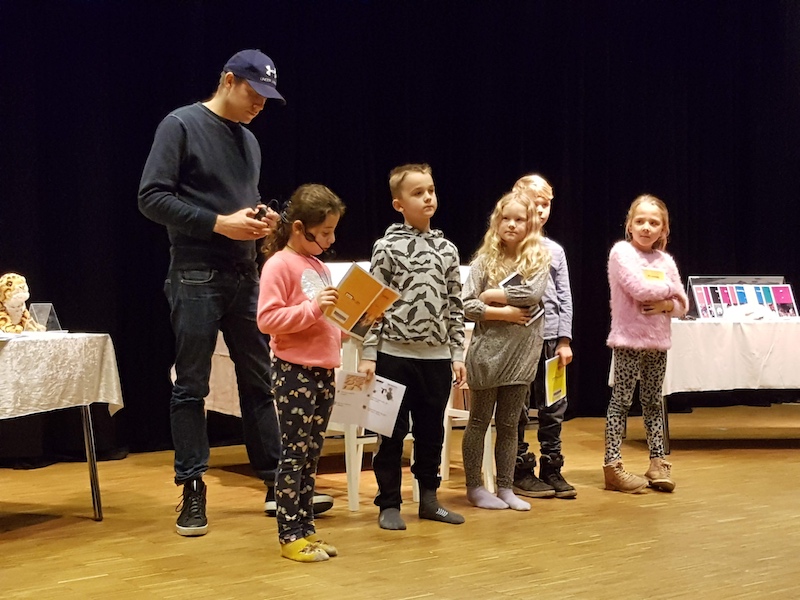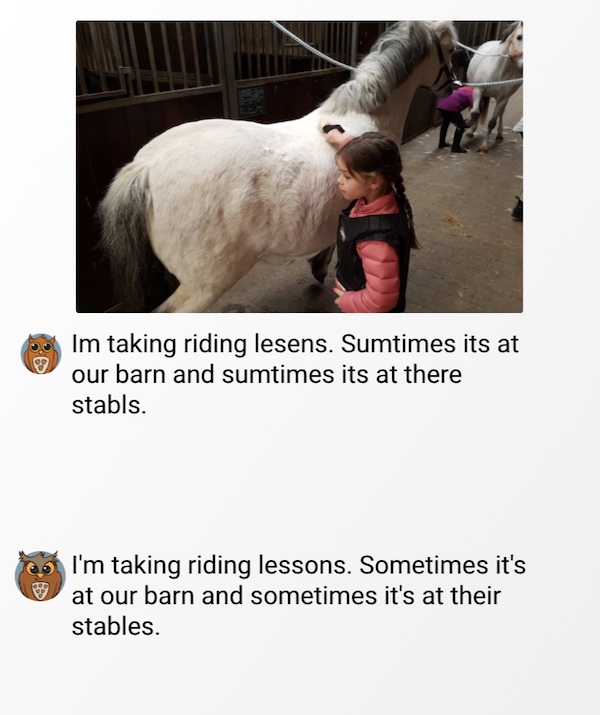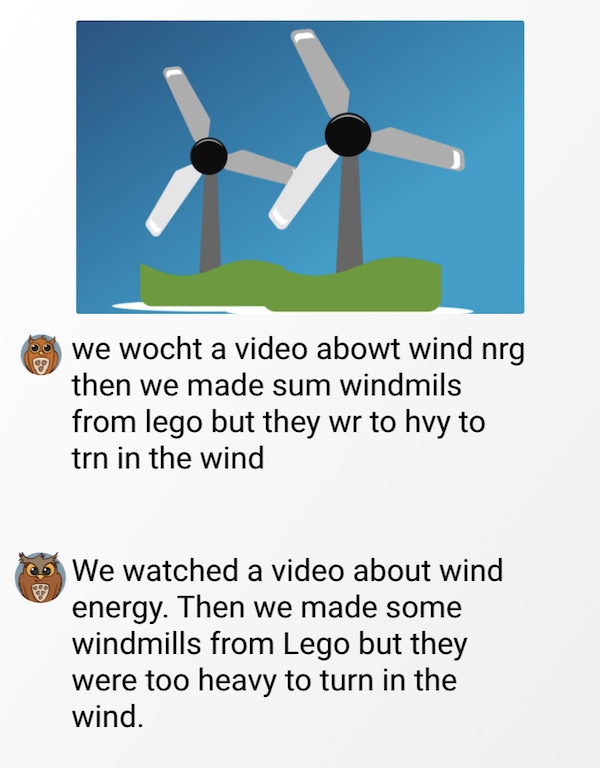One element that makes a piece of writing interesting is its authenticity. Students value having choice in writing and being able to write about what matters to them. Topics may range from their pet puppy to concerns about the environment. But how do we help them find authentic audiences to share their writing with? This acrostic of the word AUTHENTIC will help you think of people, places, and ways in which students can write and share with a purpose in mind.

Audience
Students can share their writing with an authentic audience in so many ways. Discuss possibilities with your students. Talk about where and with whom they could share their work. Will it be local or somewhere far away (e.g., virtual pen pals)? Consider outdoor, community, and public spaces for sharing. Students could perform ‘Playground Poetry’ readings or a ‘Stories on the Steps’ performance at school. You can also consider leaving printed copies in waiting rooms, at the school board office, or at the public library (with permission, of course).
Understanding
Instead of giving a unit test, students can create a book demonstrating their comprehension of the key concepts. This is both a formative and summative assessment. Students can also create self-assessment books to accompany their report cards at the end of a term. Of course, their authentic audience would be their teacher and parents. WriteReader can also be used to develop science or math journals to show their understanding of the topic and content or to keep track of their progress.

Word Connoisseurs
Students can collect words, quotes, poems, or tongue twisters from other books that they find tremendous, terrific, and irresistible! They can also ask various people at school and home for suggestions. As they create their book, they can write about the purpose of choosing those words for their collection. Perhaps they are pleasing to the ear or fun to say. Maybe they are inspiring or conjure up great memories or feelings. After publishing their book, they can either read it to or with a few of the people they received suggestions from to enjoy it together.
Guides
Students can create books full of helpful tips and specific school information for new students and families. These books could be displayed at the school office for families to take home with them. Students may wish to create dual-language books for immigrant families or if you are in a dual-language track school, such as Spanish/French Immersion. Students can also create books about clubs in the school and leave these at the counselor’s office to help other students find belonging within a group.
Experiences
It’s much easier to come up with a story when it’s true and happened to you. Have students draw on their life experiences and tell each other their ‘true-life’ stories. Their experiences might be funny, inspiring, or heartwarming; they could be travel or outdoor adventures, mix-ups, freaky coincidences, or purposeful interventions. After telling their story to someone, have them write the same story using WriteReader. They can then share their books in a sharing circle or author’s chair—group similar stories in labeled bins, which may be borrowed at the school library.

News
Students can write about what is happening in the world or at school. They can use sites like HuffPost Teen or Time for Kids to learn about current events and important issues. (These articles are more accessible for students to access and understand.) Once they’ve written about a particular news topic, they can post a book daily on a dedicated bulletin board for students to read. You could also arrange with the principal for one student a week to read their newsbook over the PA system.
Transforming
Children can be changemakers, too. You’re never too young (or too old) to care deeply about an issue and want to affect change for the better. Children can use WriteReader to write to the principal, city council, politicians, or the local newspaper about something that they’re concerned about. They can also get involved with non-profit organizations and movements, like the UN’s Sustainable Development Goals. Students can practice their persuasive writing skills by creating books to raise awareness for a specific purpose or convincing others to contribute to a fundraiser.
Ideas
Most schools use innovative pedagogical frameworks like inquiry, project-based learning, maker space, and design thinking. Students can be given design challenges, strengthening their problem-solving and collaboration skills. Students can document every stage (planning, prototyping, testing, etc.) of their design challenge with photos, recordings, and writing. Books can be displayed with the rest of their project.

Communicating
It’s lovely to write heartfelt letters and cards and even more heartwarming to receive them! We strengthen relationships with the people around us by expressing our gratitude, offering encouragement, or congratulating someone. So, have students perform intentional acts of kindness by writing a letter or making a card for their parents, grandparents, sibling or relative, neighbor, custodian, music or dance teacher, coach, community worker, etc. They can email or text the link of their book to that person or print a hard copy and give it to them in person. This kind of purposeful writing also helps develop students’ social-emotional skills.
Students may say that they don’t know what to write about, but it is equally important for them to understand why they are writing. Authentic writing for authentic audiences is key to incentivizing students to write with purpose.
